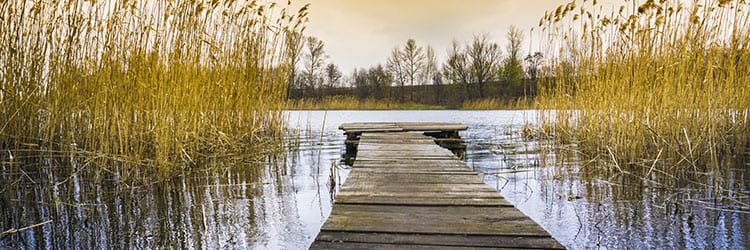I throw out the phrase “Watershed Management” a lot, but what does it mean. Well in a nutshell it means the area of land that captures the rain that eventually flows to the lower lying lake, stream or even ocean. Most of our lakes get a high percentage of its water from “Runoff” from rain events. So when you look at a 1000 acre lake it can have several thousand acres of watershed feeding the lake. A watershed can be made up of forests and vast undeveloped land. In areas that are more developed it encompasses everything, roads, houses, farms, toxic waste dumps, etc. and what it ultimately is, is a funnel to the lake or body of water that is below it.
NOW HOW DOES THE WATERSHED EFFECT THE LAKE?
First, a large watershed will increase the turn over of water in a lake system. So for instance a 100 acre lake with a watershed of 200 acres has twice the area of water being captured and ultimately entering the lake either through run off or ground water. The watershed also included the actual lake. So 2 inches of rain falls per square foot in 1 day (large event) 100 acre lake average dept 6 feet that is 24,000,000 cubic feet of water in the lake. 2 inches of rain is 0.16 cubic feet of rain. Approx. 40,000 sq feet in an acre, and the watershed is 200 acres. 0.16 x 40,000 x 200 = 1,280,000 Cubic feet of water on one rain event. This value is about 1/20 of the total amount of water in the lake. So in one rain event 5% of the lake’s water is added to the lake, which pushes 5% over the dam. That is a lot of water, double the watershed size again and well, you get the idea. (Note: This is not taking into consideration evaporation and absorption, it is just an approximation.)
Second, the water that flows through the land areas of the watershed, will accumulate minerals, chemicals and other particulate that will ultimately end up in the water source (lake) at the end of its journey. Natural landscapes with limited hard services have a filtering effect that can limit the amount of nutrients that get to the lake. The Lake should have areas like swamps and well wood area that act as buffers, that actually use the nutrients that is in the water as it slowly flows through. This can limit the amount of contaminants that end up in the lake. Conversely, most storm water systems that are around roads and in highly developed areas transport the water directly into lakes, not allowing any buffering or filtering. It also increase the time table for when the water arrives in the lake after a storm event.
Why are these thing bad? The man mad hard surfaces, like roads and housing area are laced with inherent chemicals. Salts for snow melting, oil from cars, cleaners from power washing , fertilizers for a nice green lawn, septic leaching fields, herbicides for weed killing, these things end up directly in the lakes and rivers after a nice rain event. Throw a farm on the shore of such a lake and you have super high nutrients ending up in the water body. Watershed Management plans have been developed and changed and developed and changed, over years because the science behind each plan was incomplete, also changes in land use make it tough to nail down. We are currently seeing communities changing the laws to try to make up for pour watershed plans of the past.
Lakes need to have buffer zones and wetlands to help filter out all the new nutrients that come from highly developed watersheds. It may not be easy, but it is necessary.

